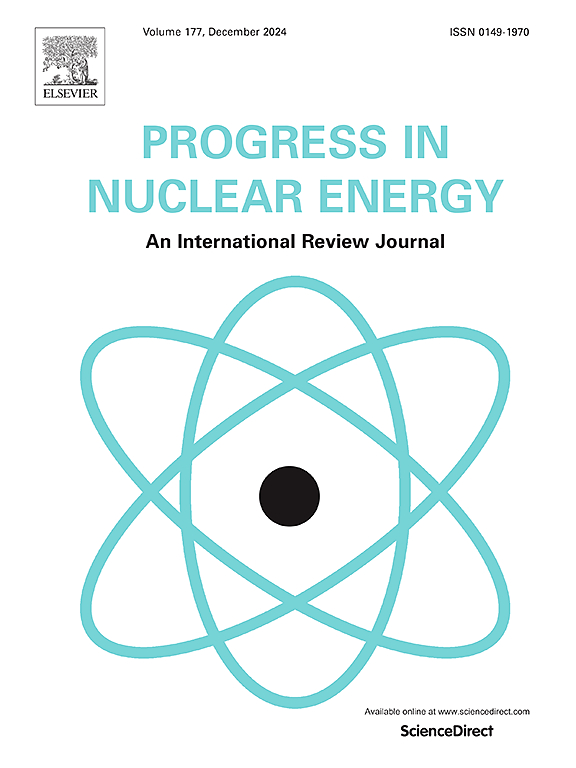A steady-state performance analysis of fuel rods with accident tolerant claddings for a WWER reactor
IF 3.3
3区 工程技术
Q1 NUCLEAR SCIENCE & TECHNOLOGY
引用次数: 0
Abstract
This survey focuses on the behavior of the fuel rods with accident tolerant claddings in steady-state conditions of a working WWER–1000 reactor. Thermal–mechanical performances of fuel rods with UO2 fuels supported by two newly recommended claddings made of FeCrAl and SiC are cross-checked against two conventional ones made of Zr4 and Zr–1 %Nb. We resort to the rigid pellet model to study temperature distribution, swelling, expansion, densification, and displacement of fuel pellet pieces. In addition, thermal and radiation creep, expansion, oxidation, as well as elastic and plastic stresses and strains of claddings are explored, too. Comparison of performances are carried out using power histories of the hottest fuel rod in four successive fuel cycles of a WWER–1000. The results indicate that the possibility of hard contact between fuel and alternative clads and therefore the creation of positive stresses due to the low creep rate is less than that of conventional clads. This privilege, however, leads to the gap thickness not being reduced during the cycle, and hence, the gap heat transfer remains significantly lower than that of their conventional counterparts. As a result, Zr–free clads keep the fuel temperature about 30 % higher than those made of Zr. This increase in fuel rod temperature undermines neutron economy, fuel burn-up and cycle safety which is worth studding for future works.
求助全文
约1分钟内获得全文
求助全文
来源期刊

Progress in Nuclear Energy
工程技术-核科学技术
CiteScore
5.30
自引率
14.80%
发文量
331
审稿时长
3.5 months
期刊介绍:
Progress in Nuclear Energy is an international review journal covering all aspects of nuclear science and engineering. In keeping with the maturity of nuclear power, articles on safety, siting and environmental problems are encouraged, as are those associated with economics and fuel management. However, basic physics and engineering will remain an important aspect of the editorial policy. Articles published are either of a review nature or present new material in more depth. They are aimed at researchers and technically-oriented managers working in the nuclear energy field.
Please note the following:
1) PNE seeks high quality research papers which are medium to long in length. Short research papers should be submitted to the journal Annals in Nuclear Energy.
2) PNE reserves the right to reject papers which are based solely on routine application of computer codes used to produce reactor designs or explain existing reactor phenomena. Such papers, although worthy, are best left as laboratory reports whereas Progress in Nuclear Energy seeks papers of originality, which are archival in nature, in the fields of mathematical and experimental nuclear technology, including fission, fusion (blanket physics, radiation damage), safety, materials aspects, economics, etc.
3) Review papers, which may occasionally be invited, are particularly sought by the journal in these fields.
 求助内容:
求助内容: 应助结果提醒方式:
应助结果提醒方式:


